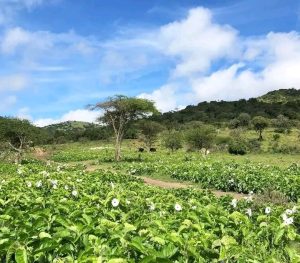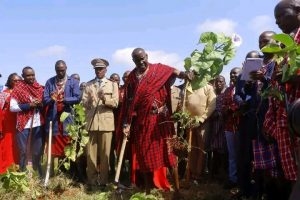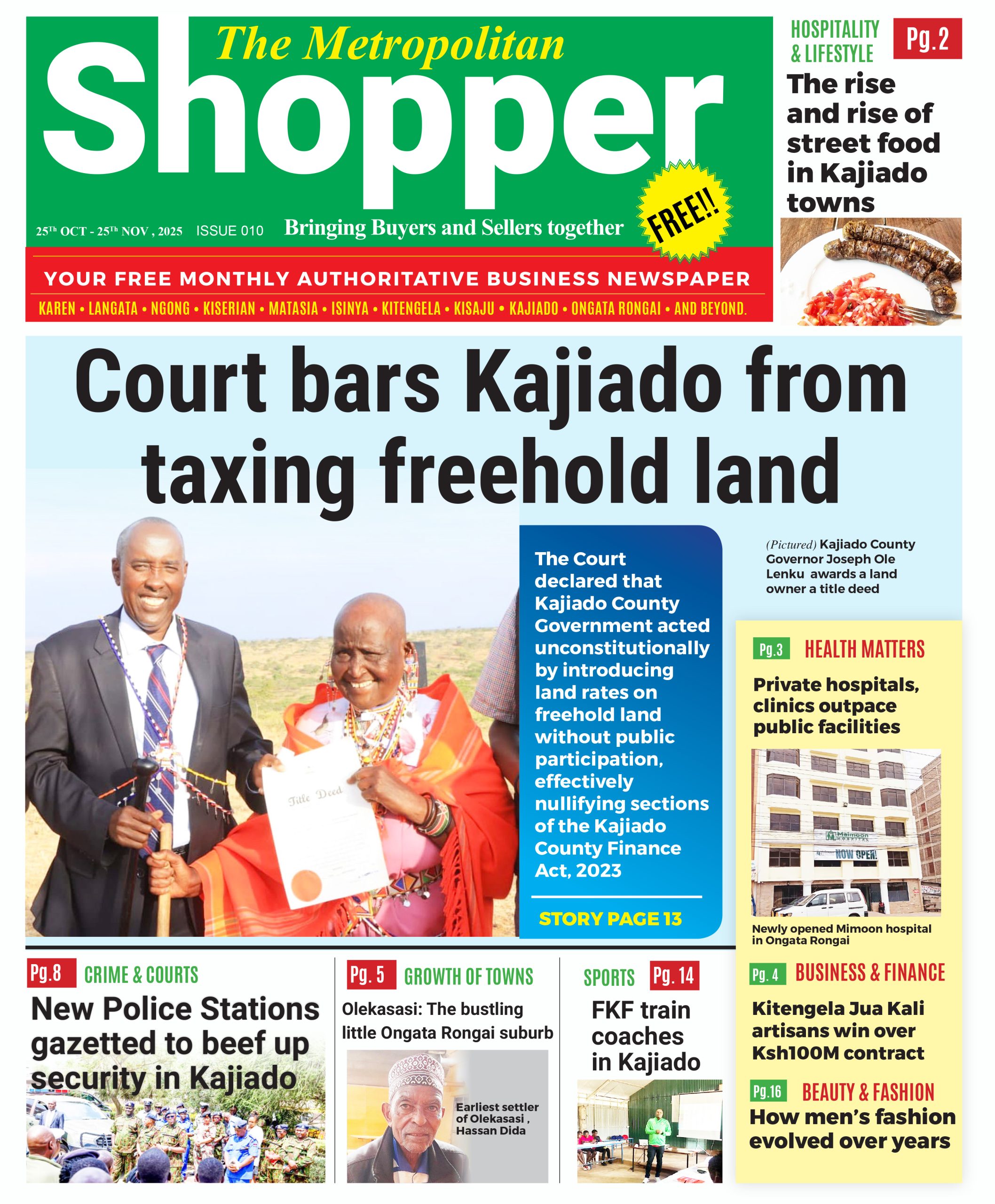The invasive Ipomoea weed has engulfed over three million acres of grazing land in Kajiado County, turning once-productive rangelands into wastelands and triggering widespread economic losses.
Introduced during the El Nino rains of 1997, the fast-spreading weed known locally as oltiameleteti, olbeneyio, or oltiameleshi, has displaced native pasture, poisoned bee colonies, and worsened drought vulnerability across the region. Its deep roots and dense foliage smother grasslands, leaving livestock with nothing to feed on and communities with little to harvest.
As of 2025, the weed remains a persistent threat, especially in Matapato North, Matapato South, and Imaroro in Kajiado East. Despite recent rains, herders are still being forced to relocate in search of pasture because no grass grows under Ipomoea.
The infestation has spread across both red and black cotton soils, with each vine capable of producing thousands of seeds that remain viable for years. Experts from the State Department for Livestock Development warn that without coordinated intervention, the weed could render entire grazing zones unusable.

Livestock deaths have surged, not from direct toxicity, but from starvation. In Naibala village, residents report losing entire herds. James Kapiranya, a herder, recounted watching his cows weaken and die. “The drought is bad, but this weed makes it worse. Our grazing lands are depleted. The animals are weak. We are helpless,” he said.
The weed’s impact extends beyond livestock. Beekeepers have reported cases of poisonous honey linked to Ipomoea nectar, collapsing local honey enterprises. Wildlife corridors have narrowed, and disputes over pasture have intensified. Area Chief Nelson Parmisa confirmed that tensions between communities are rising, especially in zones where the weed has overtaken communal grazing lands.
In 2023, Kajiado County Governor Joseph Ole Lenku officially declared the Ipomoea infestation a county disaster. Since then, the county government has launched a multi-pronged response, including a KSh200 million re-seeding and sensitization campaign funded through the World Bank’s FLLOCA program.
Demonstration sites have been established, and technical officers are training residents to identify, uproot, and safely dispose of the weed. The goal is to restore native pasture and build community resilience.
ALSO READ:
Ruto commissions Dr Abdulrahman Al-Sumait Complex at Umma University, Kajiado
In Nasaru-Olosho Conservancy, over 1,000 residents partnered with WWF-Kenya to manually clear 1,840 hectares of infested land. The initiative not only restored pasture but also generated income for more than 600 households. “Children who couldn’t attend school due to lack of fees are now back in class,” said Jacob Nkananai, CEO of Nasaru Conservancy. “This project brought smiles and hope.”
Youth groups in Sajiloni have started the initiative of teaching residents to make paper and baskets from the weed’s fibrous stems. Community-Based Organizations in Naibala are producing charcoal briquettes from uprooted plants, turning a menace into a source of income. These grassroots efforts are helping communities reclaim their land from the invasive weed.
Experts say biological control and targeted grazing may offer long-term solutions. The Climate Justice Impact Fund for Africa (CJIFA) is exploring ecological restoration strategies, while ICIPE researchers are studying natural predators that could suppress the weed’s spread. But for now, although labor-intensive, manual uprooting remains the most effective method.
YOU MAY HAVE MISSED:
National Parks Entry Fee Raised To Fund Kenya’s Conservation Drive
Governor Lenku has urged residents to join eradication efforts, warning that unchecked growth could devastate the county’s pastoral economy. “This is a war we must win,” he declared at a rally in Ibisil. “We cannot allow this weed to define our future.”
The fight against Ipomoea is not just about land but also about dignity, survival, and the right to thrive in one’s own environment. For now, the battle against ipomea continues.
By Masaki Enock




